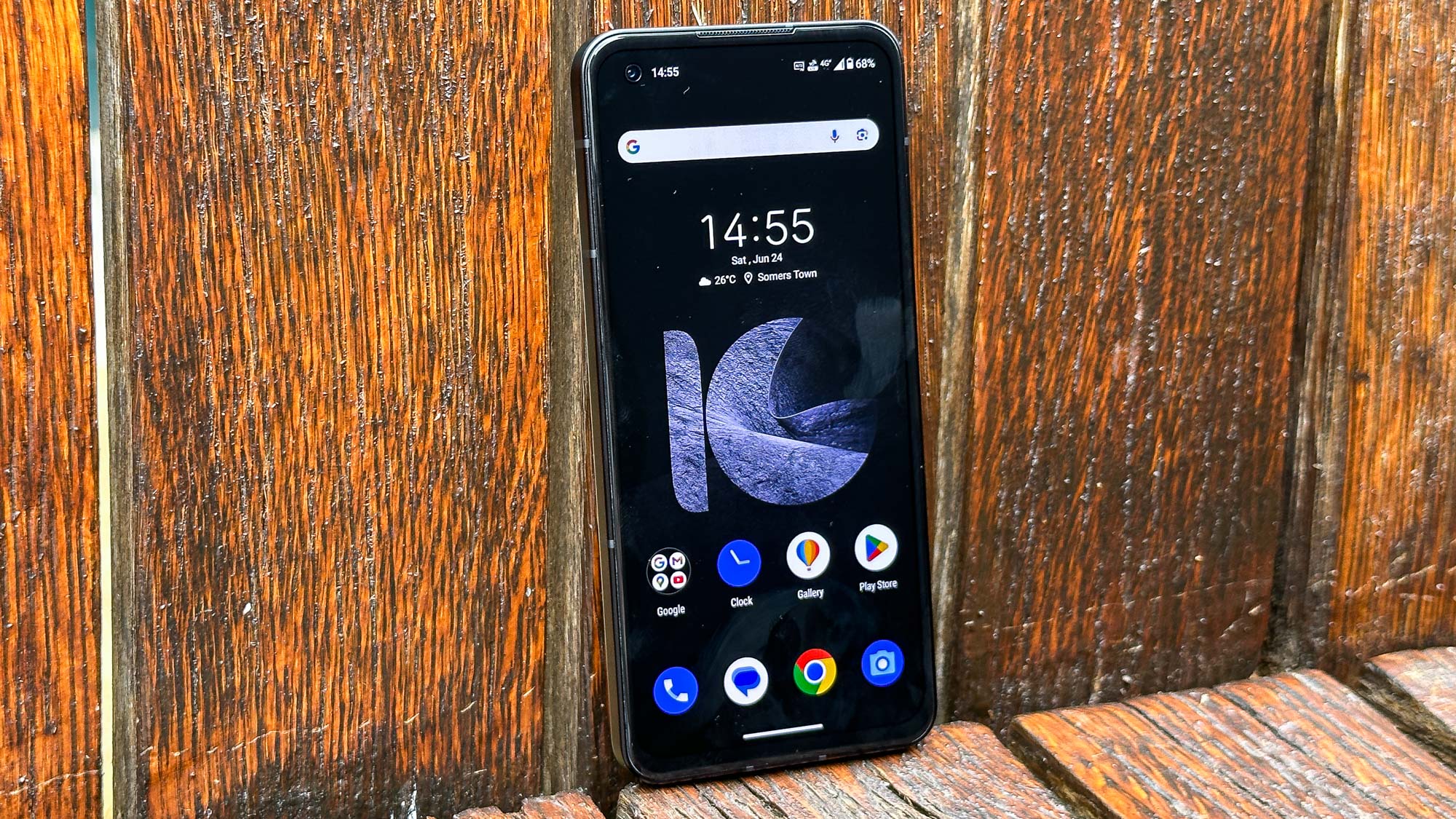Tom's Guide Verdict
It's the best small phone for fans of compact handsets, but the Asus Zenfone 10 could pull users away from Samsung and Google flagships with top-quality performance and battery life. If you can forgive its more limited photography options and the shorter-than-average software support window, the Zenfone 10 is a top choice
Pros
- +
Compact frame stands out
- +
Powerful performance
- +
Excellent battery life
- +
Several smart software enhancements to Android
Cons
- -
Only two years of software updates
- -
Limited cameras for a premium phone
Why you can trust Tom's Guide
The Asus Zenfone 10 could easily have retained its status as one of the world's best small phones without really trying to upgrade anything from the Zenfone 9. Fortunately for us, Asus has made enough changes to make the new iteration as a worthwhile upgrade in its own right, while keeping it competitive with other, bulkier phones.
Asus still corners the market when it comes to performance-per-square-inch in a smartphone. The same goes for battery life too, even if it's a shame that photography and software updates are weaker than key competitors from Samsung and Google.
Still, our overall impression, as you'll discover through reading this Asus Zenfone 10 review, is really positive, and we're confident this would be a fantastic purchase for any Android phone buyer, whether you're specifically after a small phone or not.
Asus Zenfone 10 review: Specs
| Starting price | £749 |
| Display | 5.9-inch OLED (2400 x 1080) |
| Refresh rate | 144Hz adaptive (120Hz outside of games) |
| Chipset | Snapdragon 8 Gen 2 |
| RAM | 8GB/12GB/16GB |
| Storage | 128GB/256GB/512GB |
| Rear cameras | 50MP main, 13MP ultrawide |
| Selfie camera | 32MP |
| Battery | 4,300 mAh |
| Charging | 30W wired, 15W wireless |
| Size | 5.77 x 2.68 x 0.37 inches (146.5 x 68.1 x 9.4mm) |
| Weight | 6 ounces (172g) |
| Colors | Midnight Black, Starry Blue, Aurora Green, Eclipse Red, Comet White |
Asus Zenfone 10 review: Price and availability
The Zenfone 10 costs £749 for the standard 8GB RAM and 256GB storage flavor, while a 16GB/512GB version goes for £819. You can buy it right now if you're a U.K resident, while U.S. phone buyers will have to wait until September.
American pricing for the Zenfone 10 starts at $699 for an 8GB/128GB version, going up to $749 for 8GB/256GB and $799 for 16GB/512GB.
Like the Zenfone 9 last year, the basic price undercuts the $799/£849 Galaxy S23, though it can't beat the current master of cheap flagships, the $599/£599 Google Pixel 7. However, as we go through the specs below, perhaps you'll look more kindly upon Asus' chosen price tag.
Asus Zenfone 10 review: Design
Asus' focus over the past few generations of Zenfone has been the phone's compact size. And the good news is that's not gone anywhere. This is still a 5.9-inch handset that's far smaller than any other equivalent Android phone you can buy today.
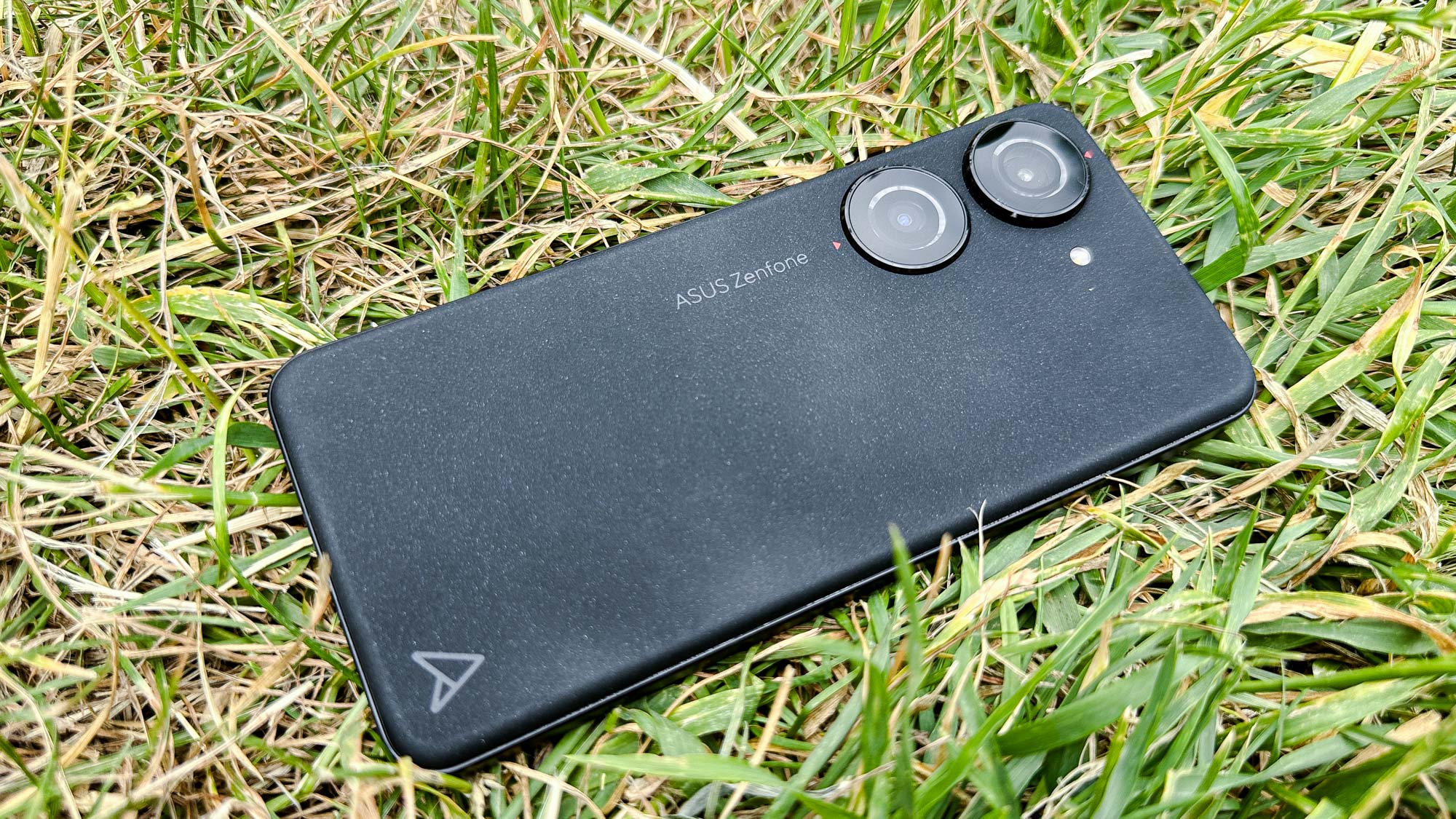
New rings around the rear cameras and a different back panel texture help differentiate the Zenfone 10 from the outgoing model, but otherwise it's a bit tricky to tell the difference between the most recent Zenfones .
The Zenfone 10 weighs just 6.02 ounces (172g) which is a touch heavier than the Zenfone 9 but still quite light overall. Asus intends the phone to be completely usable when wielded one-handed, and the lightweight, small frame makes this perfectly possible.
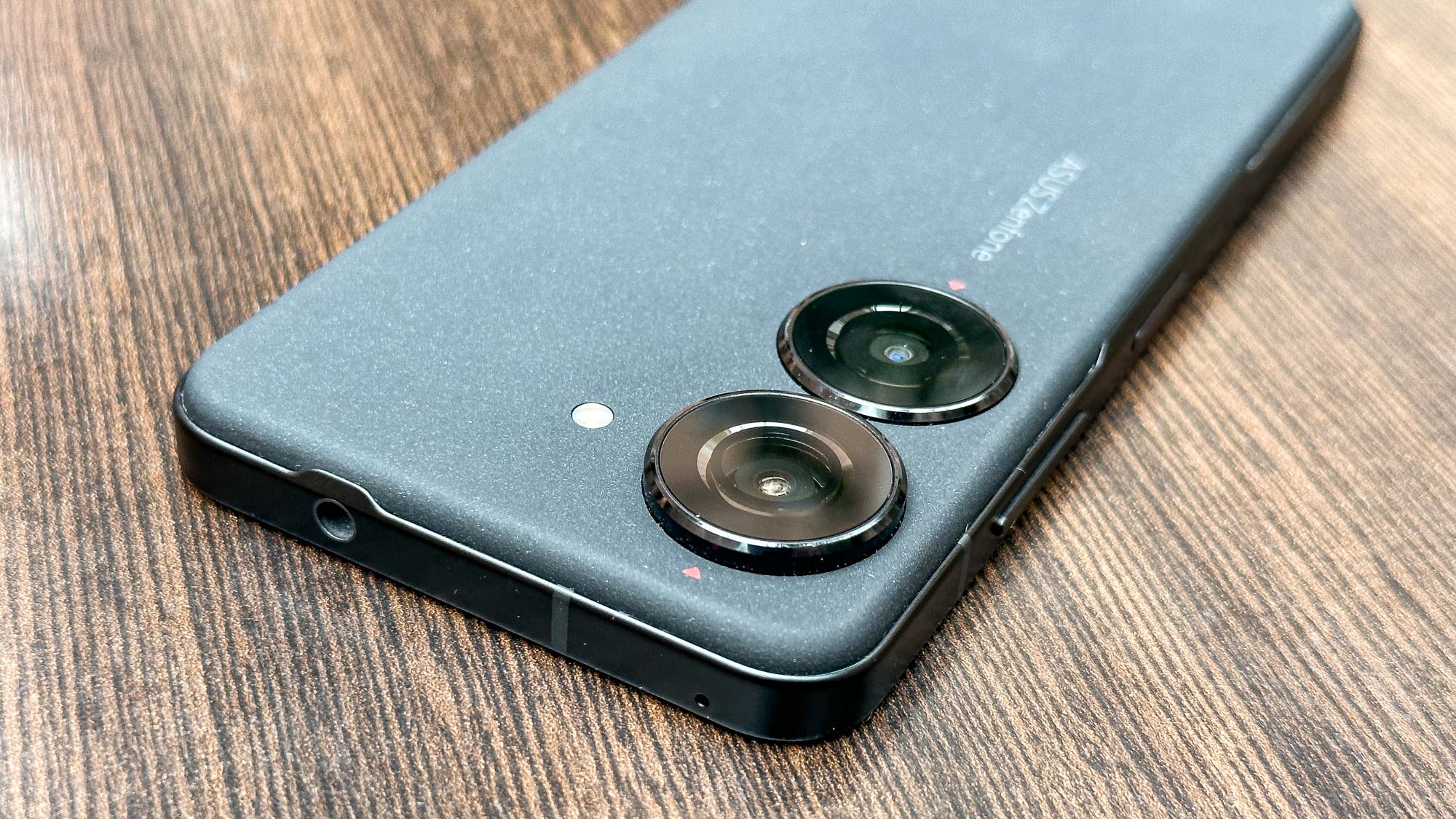
As someone used to two-handing phones like the enormous iPhone 14 Pro Max, it's genuinely enjoyable and productive to be able to operate the Zenfone 10 fully while my other hand's occupied, such as holding onto a handrail on the Underground or sipping a coffee.
Part of the Zenfone’s featherweight mass comes from the bio-polycarbonate plastic back. Though the mention of plastic on a flagship phone may have you recoiling in horror, the Zenfone 10 doesn't feel cheap, even if it's not as luxurious to handle as a glass-backed phone. In fact, the plastic has allowed Asus to give the back an extra-grippy texture, which offers a sense of security when it’s in your hand.
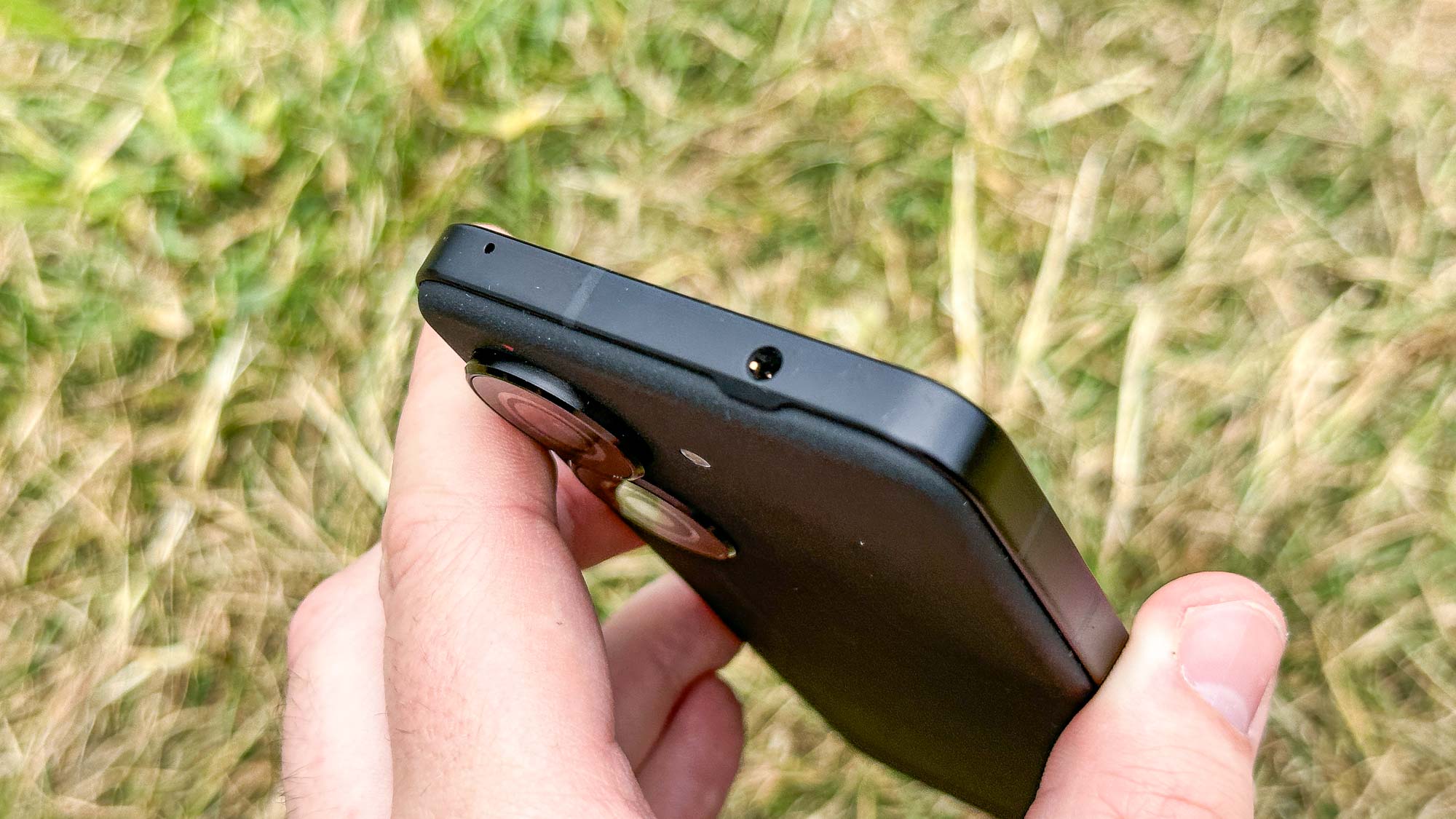
A 3.5mm headphone jack can still be found on the phone’s top edge, a welcome sight on any handset now that the industry expects everyone to have moved to wireless headphones. Despite this big hole in the Zenfone’s body, it still offers IP68 dust/water resistance. It makes you wonder why other flagship phones can’t offer us both, but Asus apparently can.
Asus has been generous with the colors, offering Aurora Green, Midnight Black (pictured), Comet White, Starry Blue and Eclipse Red versions of the Zenfone 10.
Asus Zenfone 10 review: Display
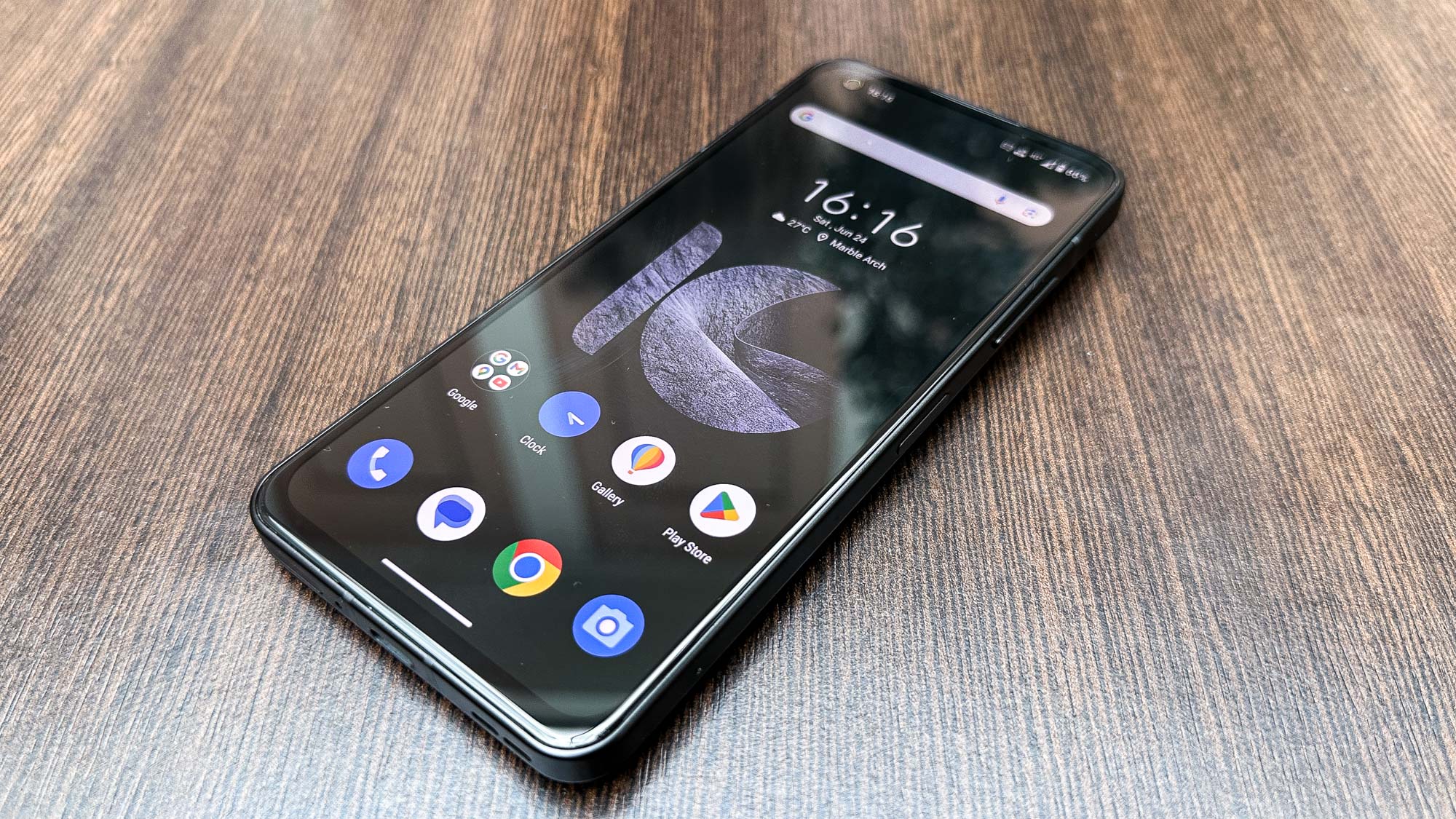
The Zenfone 10 uses a small, but well-appointed 5.9-inch AMOLED panel with an FHD resolution and a refresh rate that can reach 144Hz. This max value only works in certain games though, so most of the time you'll see a 120Hz peak. That's still plenty smooth enough for scrolling around your apps, matching what Samsung offers with its S23 flagships and beating the 90Hz peak of the Pixel 7.
| Asus Zenfone 10 | Samsung Galaxy S23 | Google Pixel 7 | |
| Peak SDR brightness (nits) | 772 | 1,002 | 926 |
| DCI P3 color gamut coverage (%) | 105.4 (Optimal) / 124.2 (Natural) | 150.2 (Vivid) / 91.1 (Natural) | 77.4 |
| Delta-E color accuracy (lower is better) | 0.35 (Optimal / 0.39 (Natural) | 0.34 (Vivid) / 0.24 (Natural) | 0.28 |
Sadly, when it comes to brightness and colors, the Zenfone falls down a bit compared to its rivals. While the Galaxy S23 and Pixel 7 do have a large-screen advantage, it's a shame to see the Zenfone 10's color accuracy and peak brightness were noticeably worse than its main competitors. At least the Asus phone offers decent color gamut coverage.
Asus Zenfone 10 review: Cameras
Here we find one of the less impressive parts of the Zenfone 10's overall kit. That's not to downplay the quality of the components: there's a 50MP main camera, a new 13MP ultrawide camera, and another new 32MP camera on the front for selfies, but you get a telephoto camera on the Galaxy S23, and Google offers some of the best photo processing tech on any phone with the Pixel 7. The Zenfone's value isn't to be found in its photo kit.
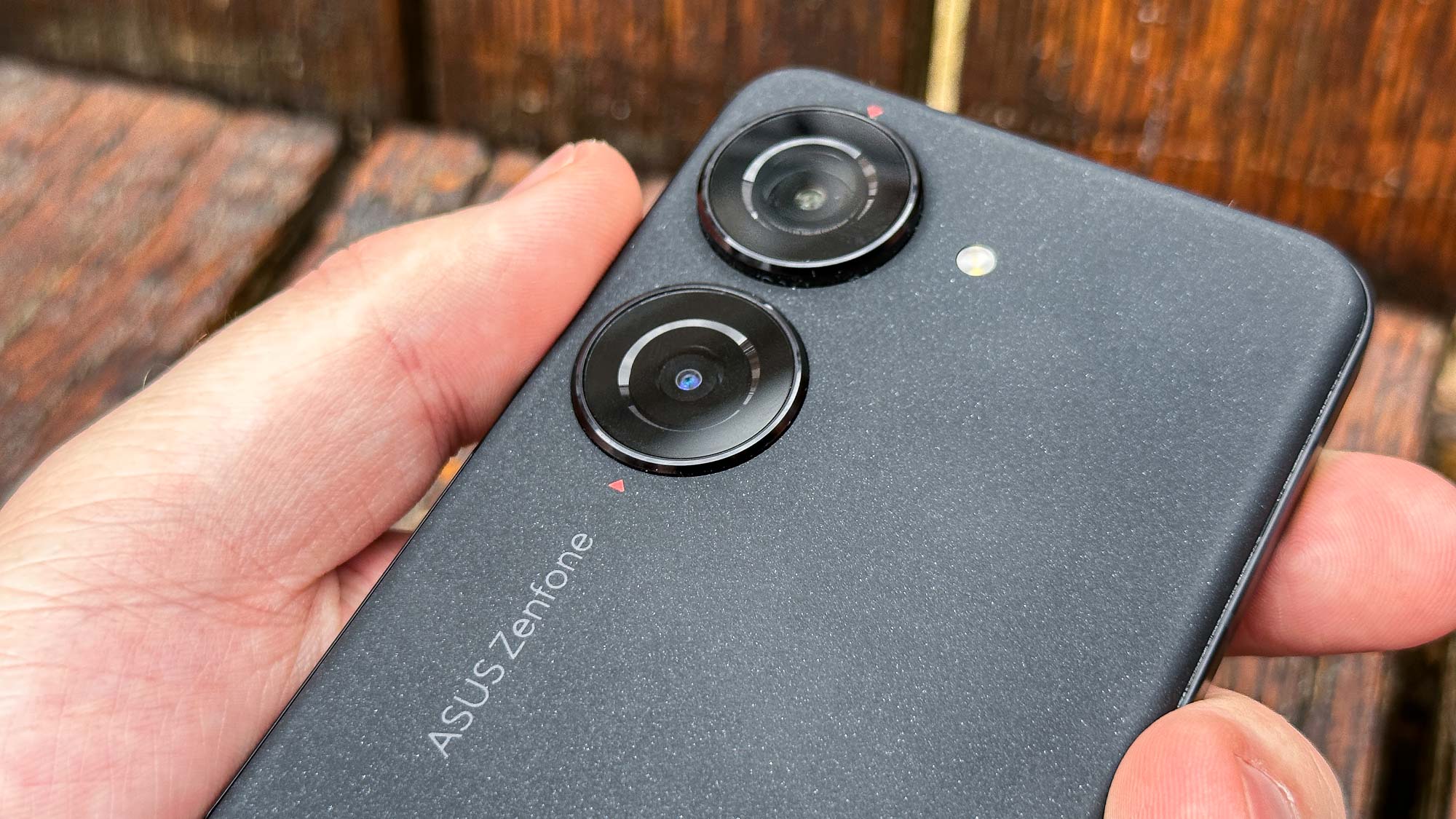
With the Zenfone 10 in one pocket, and a Samsung Galaxy S23 in the other to act as a yardstick, I tried out the cameras on a trip around the Tom's Guide London office and the Marylebone neighborhood. Starting by pointing the 50MP main cameras of both phones at St. James's Church.
In typical Samsung fashion, the Galaxy S23's image offers brighter, richer colors than the Zenfone. However, I like the contrast level of the Zenfone, which helps bring out the individual bricks and tiles in the walls, grooves, and flying buttresses of the church.
As I mentioned before, there's no zoom lens, but the 50MP main camera on the Zenfone 10 offers up to 8x digital zoom, as well as a 2x pre-set in the camera interface that supports the same 12MP resolution as a standard 1x shot. I compared this to the 2x zoom on the S23, which also uses the main camera for this magnification since the dedicated telephoto camera starts at 3x.
Neither shot is that impressive, though some may prefer the Galaxy S23's brighter, sharper effort over the darker, softer image produced by the Zenfone.
The Zenfone 10's main camera features a 6-axis hybrid gimbal system, apparently stabilizing the phone up to 1.5 degrees in any direction when you record video. Testing video capture capabilities against the S23 revealed that this pays off, reducing the bobbing effect as I walked with both phones to make my panning motions much smoother on the Zenfone.
I tested the Zenfone's ultrawide camera with this sculpture outside the Wallace Collection art gallery. It's not a great shot from either the Zenfone 10 or the Galaxy S23, which is understandable given the awkward dark but glossy surface of the sculpture.
From a distance, I think Samsung's more lively colors sell its phot better. But when you zoom in, there's more detail to be found in the Zenfone shot. The folds of the female figures' dresses are visible in the S23's image, but the Asus phone shows them off much more crisply.
In addition to changing the resolution of the selfie camera on the Zenfone, Asus has used a sensor with RGBW pixels instead of the usual RGGB, which apparently enhances light and reduces noise.
Despite this, the Zenfone 10 still produced a darker self-portrait compared to the S23. Plus the Zenfone's portrait mode effect hasn't cut me out as effectively — check my glasses frames in both shots.
I do quite like the Zenfone's more saturated colors, though, which helps bring detail to the highlights of the shot, rather than make me look slightly gray-haired like the S23 does.
So overall the Zenfone holds its own against the Galaxy S23, even if it doesn't decisively beat one of the best camera phones in any category. It's a real shame that it's missing a telephoto camera though. Asus no doubt had to prioritize cost or internal space when making the Zenfone 10, but for the price you'll pay for this phone, I'd be hoping for a third rear camera to cover all a user's standard phone photography needs.
Asus Zenfone 10 review: Performance
Asus didn't skimp on the Zenfone 10's chipset. It's armed with a Snapdragon 8 Gen 2, with either 8GB, 12GB or 16GB RAM depending on where you're buying it and how much you're willing to spend. At worst, then, you're getting a roughly equivalent chipset to the Galaxy S23's Snapdragon 8 Gen 2 for Galaxy with the same amount of RAM, or more memory than you can even spec for the much more expensive Galaxy S23 Ultra.
| Asus Zenfone 10 | Samsung Galaxy S23 | Google Pixel 7 | |
| Chipset/RAM as tested | Snapdragon 8 Gen 2 / 16GB | Snapdragon 8 Gen 2 for Galaxy / 8GB | Google Tensor G2 / 8GB |
| Geekbench 5 (single-core/multi-core) | 1,451 / 5,027 | 1,522 / 4,876 | 1,054 / 3,021 |
| 3DMark Wild Life Extreme Unlimited (score / frames per second) | 3,648 / 21.9 | 3,825 / 22.9 | 1,755 / 10.53 |
We see Asus' investment in the chip and RAM on board the Zenfone pay off in our benchmark results. The Zenfone 10 either beats or narrowly loses to the Galaxy S23, which uses less RAM but features a unique high-performance version of the same Snapdragon chip. The Google Tensor G2 inside the Pixel 7 doesn't really compare to the other two phones, even if it offers other software benefits that these benchmarks don't measure.
Storage options on the Zenfone 10 run from 128GB, through 256GB and up to 512GB, meaning you shouldn't have trouble fitting all your data onto the Zenfone no matter how much of a power user you are.
Asus Zenfone 10 review: Battery and charging
Somehow there's 4,300 mAh of battery squeezed into the Zenfone 10's compact body. That's on the small side for flagship phones in general, but it's a lot of battery for a phone of this size. It still beats the 3,900 mAh capacity of the Galaxy S23, and almost matches the 4,355 mAh in the Pixel 7, despite the Zenfone being smaller than both of those handsets.
| Asus Zenfone 10 | Samsung Galaxy S23 | Google Pixel 7 | |
| Battery Capacity (mAh) | 4,300 mAh | 3,900 mAh | 4,355 mAh |
| Adaptive refresh rate 100 - 0% rundown time (hrs:mins) | 12:34 | 10:27 | 7:17 |
| 60Hz 100 - 0% rundown time (hrs:mins) | 12:37 | 11:20 | 7:30 |
It's hard to tell if it's because of the oversized battery, its smaller display, or weaker brightness, but the Asus is miles ahead of both its rivals when it comes to surviving the Tom's Guide custom battery test (opening web pages over 4G constantly until the battery dies). It lasts more than two hours longer in default adaptive refresh rate mode than the S23, and more than five hours longer than the Pixel 7. Setting the phones to 60Hz mode doesn't change the podium placement.
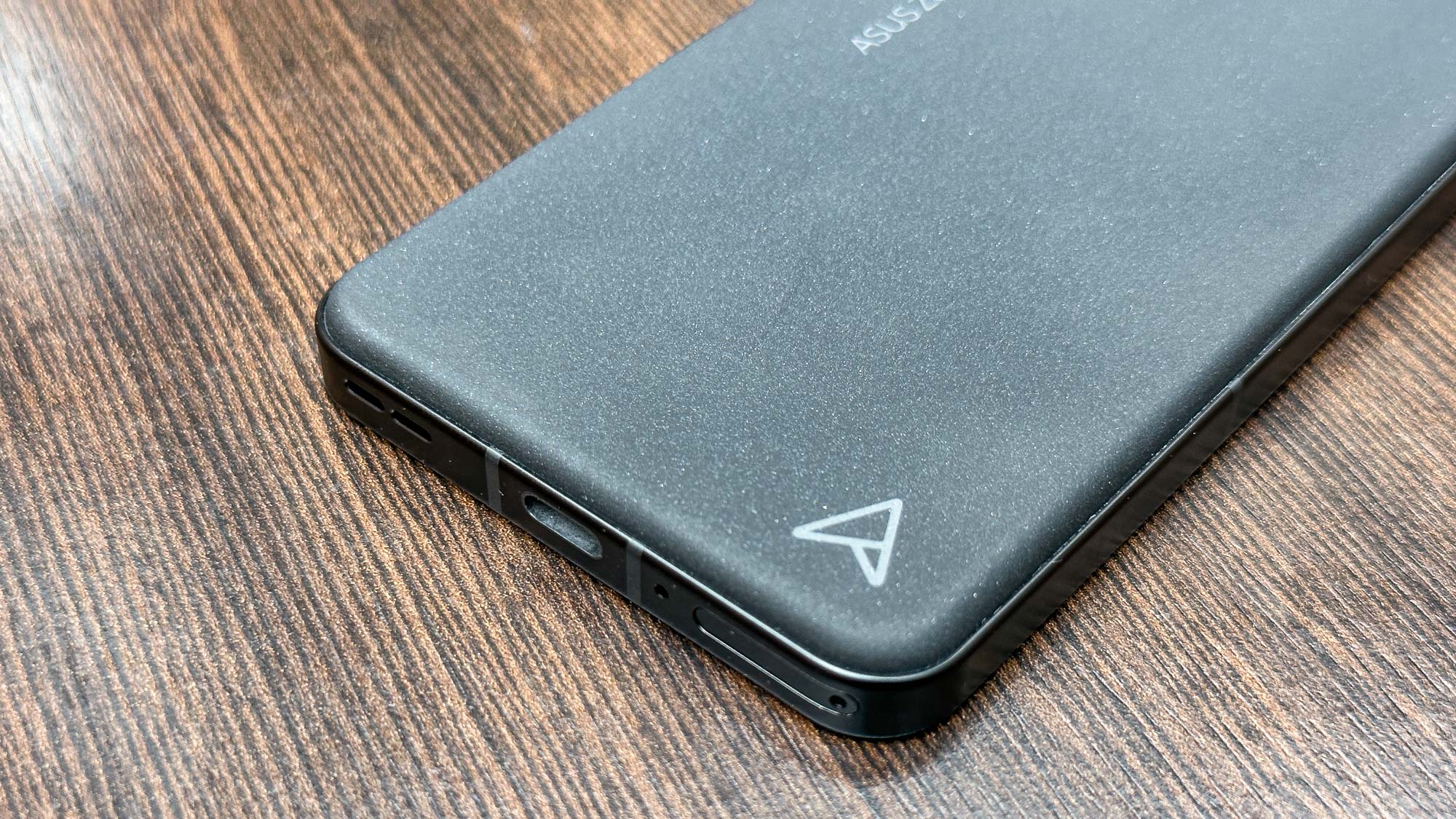
Charging still happens at a maximum of 30W, which unfortunately means it doesn't happen that fast, especially when compared to a device like the OnePlus 11 and its 80W charging speed. A drained Zenfone 10 makes it to 54% full after 30 minutes plugged in, which isn't that speedy these days.
Lucky for Asus, the Galaxy S23 charges only slightly quicker, filling to 55% in half an hour. The Zenfone 10 also gets one over on both the S23 and Pixel 7 by including a charger in the box.
The 30W charging speed may be unchanged from the Zenfone 9, but new to the Zenfone 10 is support for 15W wireless charging. We didn't get the chance to test this, but Asus claims it'll take a sluggish 2 hours to fully charge the phone wirelessly. Nonetheless, it's convenient to have if you need to top up your phone without hunting for a cable.
Asus Zenfone 10 review: Software and special features
At first glance, the Zenfone 10's interface looks like stock Android, but Asus' version of the OS has some unique touches. The power menu, volume controls, lock screen and quick settings all have a different look to them, and are designed to give access to more options with fewer inputs than normal Android, which I can definitely get on board with.
ZenTouch also returns, opening up additional shortcuts when you swipe on the fingerprint-reading power button. My preferred ZenTouch shortcut opens and closes the notifications shade/quick settings window, but you could alternatively use the feature to scroll up and down web pages or scrub through YouTube videos.
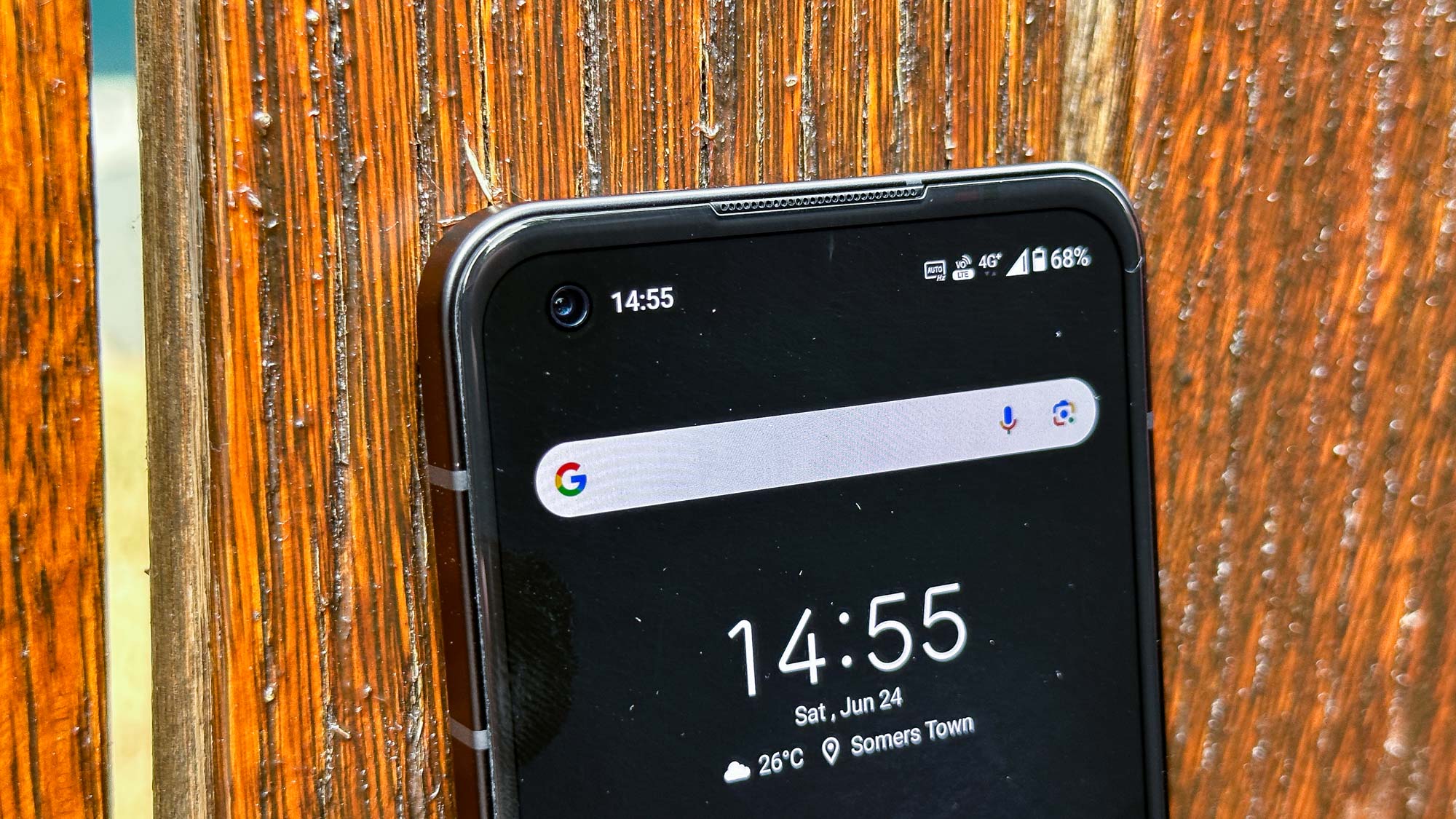
I also like the Zenfone 10's QuickShot shortcut, which not only opens the camera app with a double-press of the power button but takes a burst of shots as it does so, hopefully catching the action before it's over. Then there's the Edge Tool, which while not as customizable as something like Samsung's Edge Panels, still gives you a speedy way of accessing favorite apps and shortcuts with a swipe in from the side of the screen.
Asus is promising more for the future too. In a future update, the Zenfone 10 will gain a semantic photo search tool, as seen on iPhones and some other Android devices, to make it easier to search for photos of particular subjects or containing specific text in your gallery.
Sadly all of these smartly-thought-out features are let down by Asus' update schedule. You only get two years of full Android software upgrades, although you at least get four years of security updates. That's poor compared to Samsung's four years of full updates, or Google's full three-year policy.
Asus Zenfone 10 review: Verdict
It's unclear how big the demand is these days for sub-6-inch phones. But I'm more certain of the fact that the Zenfone 10 has pretty effectively cornered it.
It's hard to find anything comparable for a phone this size. The next smallest Android phones we'd recommend would be the 6.1-inch Google Pixel 7a or basic Samsung Galaxy S23, or perhaps the Galaxy Z Flip 4 since that foldable device can close up small when needed. But while these phones at least match the Zenfone in most areas, they're either more expensive, not as powerful or not as power efficient. Unless you prioritize photo quality more than compactness, the Zenfone comes out on top against all of these devices.
If you don't mind iPhones or older handsets, Apple still sells the iPhone 13 mini, an even dinkier 5.4-inch handset, which should still beat the Zenfone on power, photo quality and software updates, though it will be two years old as of this fall I know it can be hard to switch smartphone OSes though, so if Android's the software for you and small phones are your preference, there's little else that would suit you better than the Zenfone 10.

Richard is based in London, covering news, reviews and how-tos for phones, tablets, gaming, and whatever else people need advice on. Following on from his MA in Magazine Journalism at the University of Sheffield, he's also written for WIRED U.K., The Register and Creative Bloq. When not at work, he's likely thinking about how to brew the perfect cup of specialty coffee.
-
njbiro Am I missing something here? I see no mention of the Zenfone 10’s ability as a, you know, phone. Is is LTE or 5G? And if it’s 5G, does it get by with the lower bands or does it include high-end millimeter coverage? I know the cool kids never use a phone as a phone anymore. But some might need to in a pinch. I’d like to know how robust the signal connection is with both data and voice, and what call quality is like.Reply
